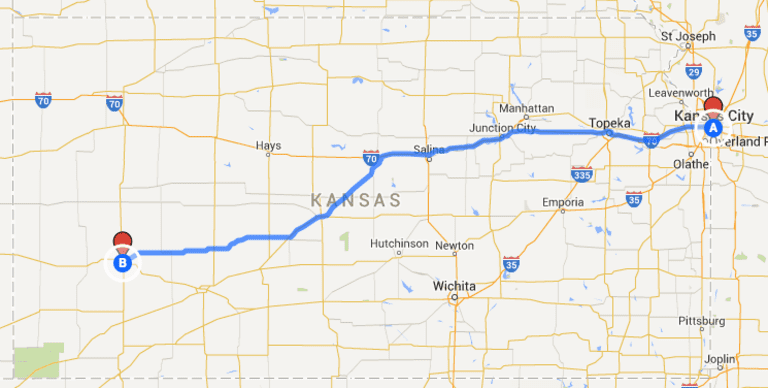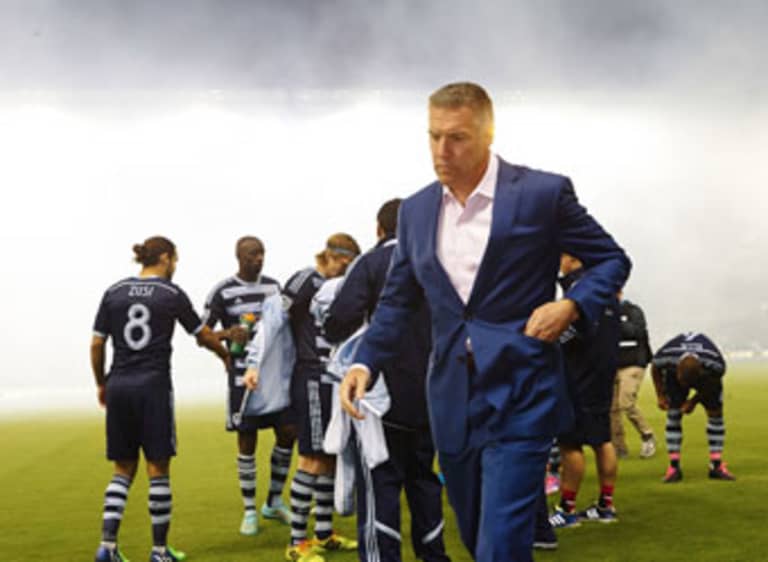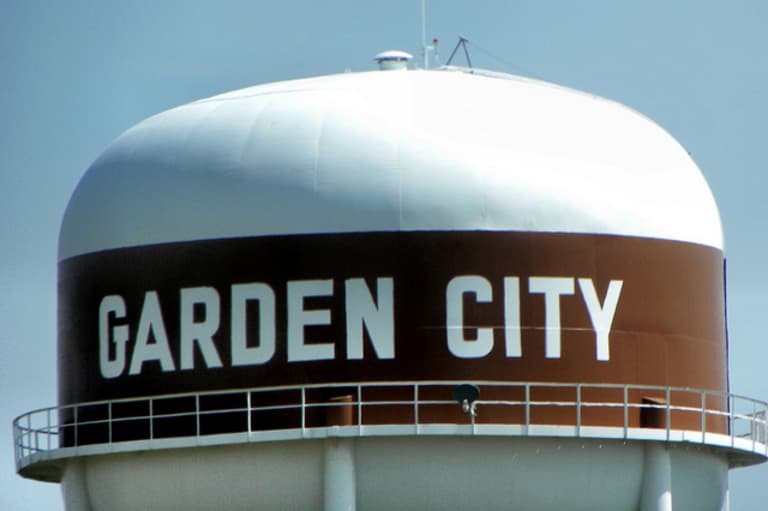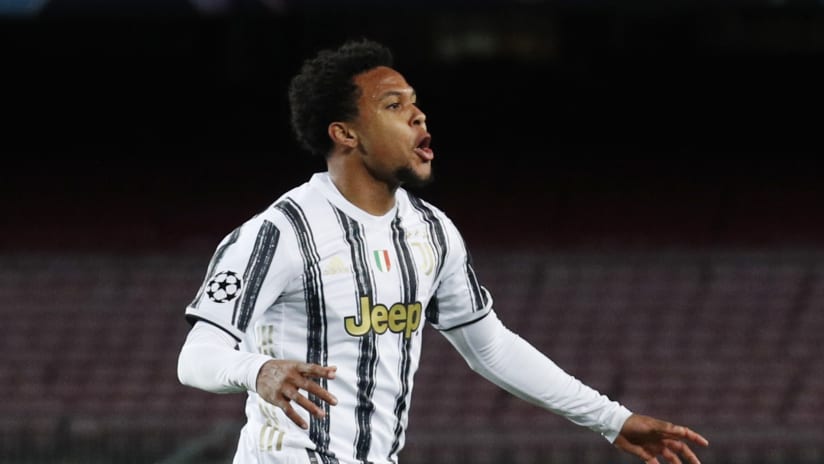KANSAS CITY, Mo. – It's a long way from Sporting Kansas City's headquarters just south of downtown to the plains of southwest Kansas, where the tallest structures in town are usually grain elevators and water towers.
But where there is a soccer hotbed in their Homegrown territory, Sporting want to be there, and southwest Kansas, with its waves of Hispanic immigration since the 1960s, is fertile ground for both brand expansion and a search for new talent.
That last part, Sporting manager and technical director Peter Vermes says, is at the deepest heart of his organization's long-range plans in Garden City, Kansas – a public-private partnership that also is expected to draw talent and support from other, similar small towns in the region.

As part of the process, Sporting would integrate into their academy structure into a to-be-created USL Premier Development League (PDL) club based in Garden City, which is so far away from Sporting Park (more than 350 miles) that it is actually a shorter drive to Dick's Sporting Goods Park in Colorado than to Sporting Park. The city will be a part of the plan as well, having approved the creation of a
Sales Tax Revenue (STAR) bond
economic-development district that would include the new club's training facilities and stadium.
“It's one thing if we just went in ourselves and tried to do this, but since the city is behind it, it has so much more impact, and that's the exciting thing about it,” Vermes said. “You bring us, you bring the city and you bring the ethnicity there that is interested in the game like they are, and we can help foster some opportunities there for more kids to be a part of our pipeline.”
If it all works, that means a two-way exchange.
Sporting's development system will get a shot of street-game toughness and creativity in an American game in which white, suburban and affluent players have long been over-represented. In return, Garden City gets all the benefits of a major construction project – and one that will anchor further development – while becoming a hub for player development within an MLS club’s academy system, something few if any other small towns can boast.
“If you look around the world and you look over the history of soccer, the best players came off the streets,” Vermes said. “That's kind of going away in our society, just because of many things that we could talk about. But to still have the opportunities for those kids who go out and have pickup games – or you may want to, but you don't have the space or the environment, and now they do. These things are all part of the master plan that we're thinking about.”
*
Heavy immigration from Mexico and Central America to Southwest Kansas was driven by the meatpacking operations that began in the 1960s, expanded significantly in the early 1980s and still provide much of the region's employment.
Garden City had a Hispanic majority in the 2000 census, but that percentage dropped to 48.6 in 2010. The nearby towns of Liberal (58.7 percent) and Dodge City (57.5 percent) still showed significant Hispanic majorities as of the most recent census, and all three areas have become soccer hotbeds, with high school and community college programs putting down strong roots where American football once held near-unchallenged sway.
But while the game was booming in the area, Sporting were largely on the periphery until the beginning of this decade, when they signed Liberal's Eduardo Moreno to their academy. More signings followed as the plan for the region took shape.

“It was surprising, I guess, in a certain way, but I've known people from Garden City for years, worked with them,” Sporting chief operating officer Greg Cotton said. "Two of my really good friends are lawyers from Garden City. So they've always told me this: 'You've got to go out there. You've got to go out to Garden City, or Liberal, or whatever, and you have to see the talent that's out there.'
"So we've always kind of had that in the backs of our minds, and then when we signed Eduardo Moreno to our team, and several others, it started to get that curiosity itching a little bit. When the opportunity arose and we were looking for a STAR bond project, the first thing we thought of was soccer. You could do a little mini-arena. There's a variety of things you can do to be an attraction for that community, but it's really soccer, and Sporting in particular, that they like.”
A similar plan, Sporting Club CEO Robb Heineman said, is behind Sporting's drive to use futsal programs – currently in place in Kansas City, Kansas, but planned for the Missouri side of the metro area as well – to bring urban-core kids into soccer.
Vermes, whose parents fled from Hungary to the United States in 1956, has seen the street game firsthand.
“When I was 9, 10, 11, 12, 13 years old and I used to go back to Hungary, we'd stay at my uncle's house, and right out in front it was a dirt street,” Vermes recalled. “We would play soccer on the street, and it was all different ages. There wasn't a thing where, 'OK, all the U-10s go over there.' It was: You were 10 years old playing with guys who were 15, guys who were 18. Men were playing. It was all different ages, and that's where you learn how to do it.
- 24 Under 24: The history of MLS players under 18 (INFOGRAPHIC)
“So there's a piece of that that will be a part of this. Now, are we going to solve every problem that way? No, because there's already players coming out of the structured system. But if you can combine the two together, you can develop some new players.”
Along the way, Vermes hopes to make serious inroads for MLS in an area where clubs from Mexican and Central American leagues still hold a lot of sway.
“Obviously, that's the ultimate goal,” he said. “I wouldn't even say it's hugely important. It's the ultimate goal. I think every year, you're always chipping at that.”
*
That's still a down-the-road goal, however, Cotton said shortly after the plan began to take shape late last year.
“It's not part of the strategy to take [other leagues] on head-on,” he said. “But it's one of those things that as a league, we need to do a much better job of getting the very best players to stay in MLS. So I think as part of an overall strategy, yeah, that makes a lot of sense. But I guess that wasn't the impetus for this program. It was, 'Hey, there's a lot of really great soccer players in this area, and let's figure out a way to develop them.'”
As that development progresses, players coming up through the academy system will get an infusion of structure to add to their skills – and more opportunities to take the game beyond the scholastic and amateur-league scenes that have blossomed across the region.

“Soccer's one piece,” Vermes said. “But it's 'What does it take to be a professional player?' It's the everyday – technical, tactical, physical, psychological – it's all of that stuff, and it's all within our culture, our ethos of who we are."
Cotton said those players can also benefit by taking those big steps close to home.
“As we saw with some of the players who came from as far afield as Garden City, it's difficult to be that young and be away from your family,” he said. “You see it in Europe and Mexico, places like that, but it's a different world in America, obviously. The family structure, high school, things like that, are a little more ingrained. So to provide facilities where they live, where these players live, is kind of the goal.
"I'd love to see some of these kids come up to the Sporting Academy at 15, 16, 17 years old, but if they're not quite there yet, the PDL route, the USL affiliation with Oklahoma City, all of those things provide a vertically integrated structure that's nothing but positive for them.”
There's no firm timetable for the PDL club's launch, Cotton said, with that depending on how quickly an investment group can put things together. But in the meantime, Sporting are moving forward with development plans for their part of the STAR bond district.
Korb Maxwell, Sporting's lead attorney on the project, told MLSsoccer.com by phone that the STAR bond district has been approved by both the city and state and now Sporting are working on the details of the project proposal itself.

“What type of facilities? What type of fields? What pieces of equipment?” Maxwell said. “What are our costs? What are our construction estimates for it? What piece of land does it go on? All of those are types of things that we need to answer internally and come up with our proposal.”
That plan then must be approved by Garden City and state officials before STAR bonds can be issued.
One key element of the plan, Maxwell said, “is to make sure there is committed and dedicated local ownership to this, and local ownership that would support the PDL team and be part of that.”
Sporting hope to have the internal work done by the end of spring, he said, and to present it to city and state officials and potential owners this summer.
“In general, we just want to expand soccer in the region,” Heineman said. “This is a community that's been very active and aggressive in trying to do that with us, so I think it'll be a really cool thing.”
Steve Brisendine, a native of Liberal, Kansas, covers Sporting Kansas City for MLSsoccer.com.







